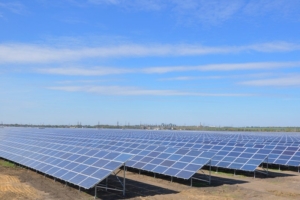War Pressures Fuel Investment in Renewable Energy in Ukraine
 Historically, renewable energy in Ukraine has represented only a marginal share of the country’s energy production. The country’s 15 nuclear reactors and fossil fuels together provide the vast majority of electricity produced in contemporary Ukraine, generating 51% and 37% of total electricity produced, respectively.
Historically, renewable energy in Ukraine has represented only a marginal share of the country’s energy production. The country’s 15 nuclear reactors and fossil fuels together provide the vast majority of electricity produced in contemporary Ukraine, generating 51% and 37% of total electricity produced, respectively.
However, the war in Ukraine has interrupted both nuclear and fossil fuel energy production globally. These pressures have increased demand for and investment in energy sources such as solar, wind and hydroelectric. Fortunately, many different actors have sprung to action to accelerate Ukraine’s transition to renewable energy. In 2018, there were already 347 Ukrainian renewable energy projects underway, and projections at the time suggested the number could grow in the following years.
Why Ukraine Needs Renewables
Conflict due to Russia’s invasion has damaged critical energy infrastructure, causing outages for an estimated 9 million Ukrainians as of the end of 2022. This has put many Ukrainians at risk of losing access to emergency medical treatment, safe food and other basic necessities like heat and light.
A five-fold explosion of poverty has further exacerbated the energy crisis. Since the outbreak of the war, the amount of Ukrainians living in poverty has grown to about a quarter of the population, subjecting more than 7 million Ukrainians to rising electrical costs, city-wide outages and lack of food and water.
Biomass
Ukraine’s agricultural industry is consistently ranking among the world’s largest exporters of crops such as wheat, corn and seed oils. It generated $27.8 billion in total value in 2021. Thus, biomass is one of the most promising potential sources of renewable energy in Ukraine. A 2022 study estimated the total economic potential of Ukrainian agricultural waste alone has the potential to supply “16.3% of the country’s energy needs.”
Solar
Despite only constituting around 5% of Ukraine’s energy production in 2022, solar energy production is expected to grow from 2023 onward. Public interest in renewable energy in Ukraine has increased in 2023, and The Solar Energy Association of Ukraine has responded to meet localized energy needs in impoverished or destroyed communities by cooperating with SolarPower Europe and the German Solar Association for the Solar Supports Ukraine campaign.
With the help of foundations such as the Energy Act for Ukraine and the Repower Ukraine Foundation, workers and volunteers installed hundreds of residential solar panels in Ukrainian communities in 2023, bringing energy to hospitals and homes.
Hydroelectric and Wind
Hydroelectric plants generate 6.8% of Ukraine’s electricity, but plants such as that at Kakhovka Dam have been damaged by conflict in 2022 and 2023, reducing Ukraine’s hydroelectric energy output. Luckily, Ukrainian company DTEK is filling this deficit with the 19-turbine Tyligulska Wind Power Plant, which opened in May 2023.
Built at twice the normal speed for a plant of this size, and the first of its kind in an active war zone, Tyligulska produces enough electricity for 200,000 homes, with plans to expand the plant already in development.
Looking Ahead
Renewable energy in Ukraine has already proved to be a popular and reliable solution to the hardship imposed on the country by Russia’s invasion. Fortunately, Ukrainian companies and the government are embracing the potential of these cleaner, independent energy sources.
– Finneas Sensiba
Photo: Flickr
